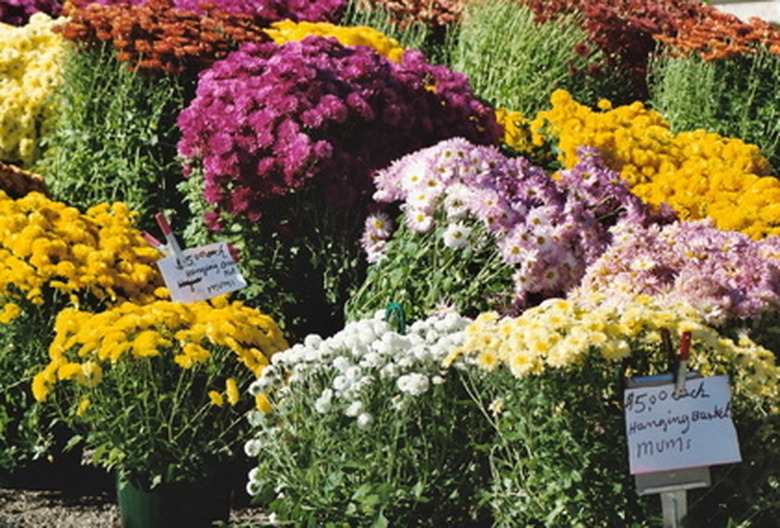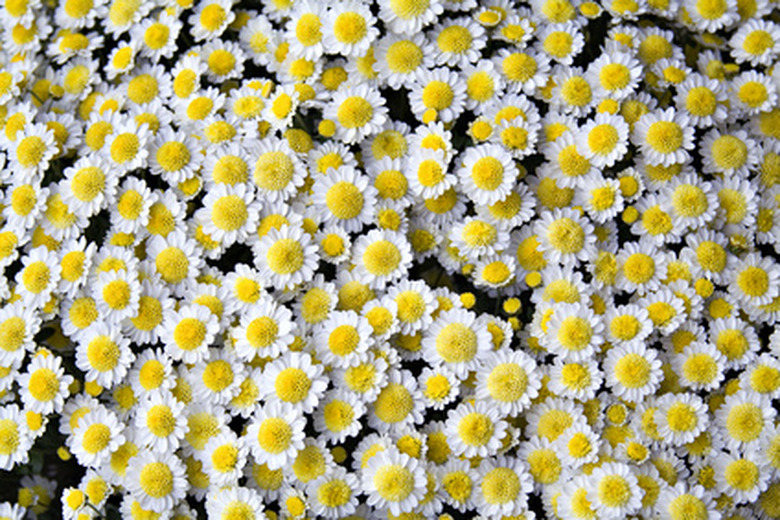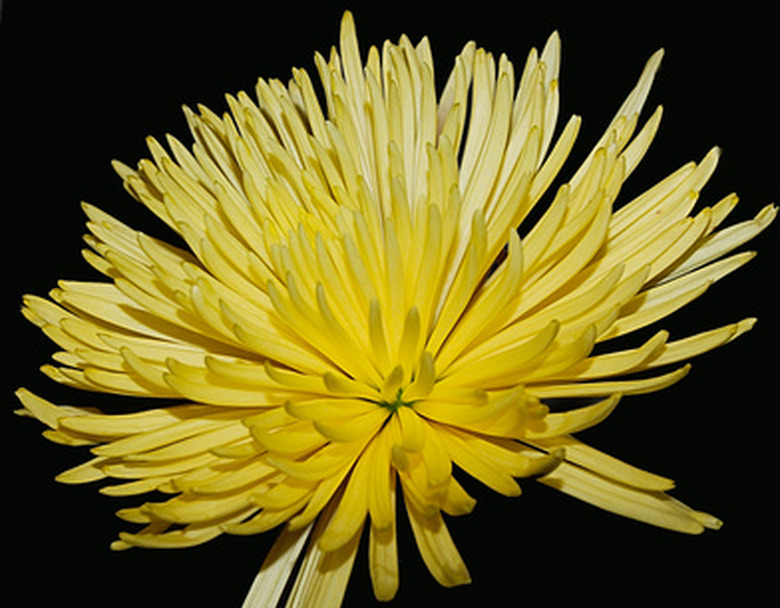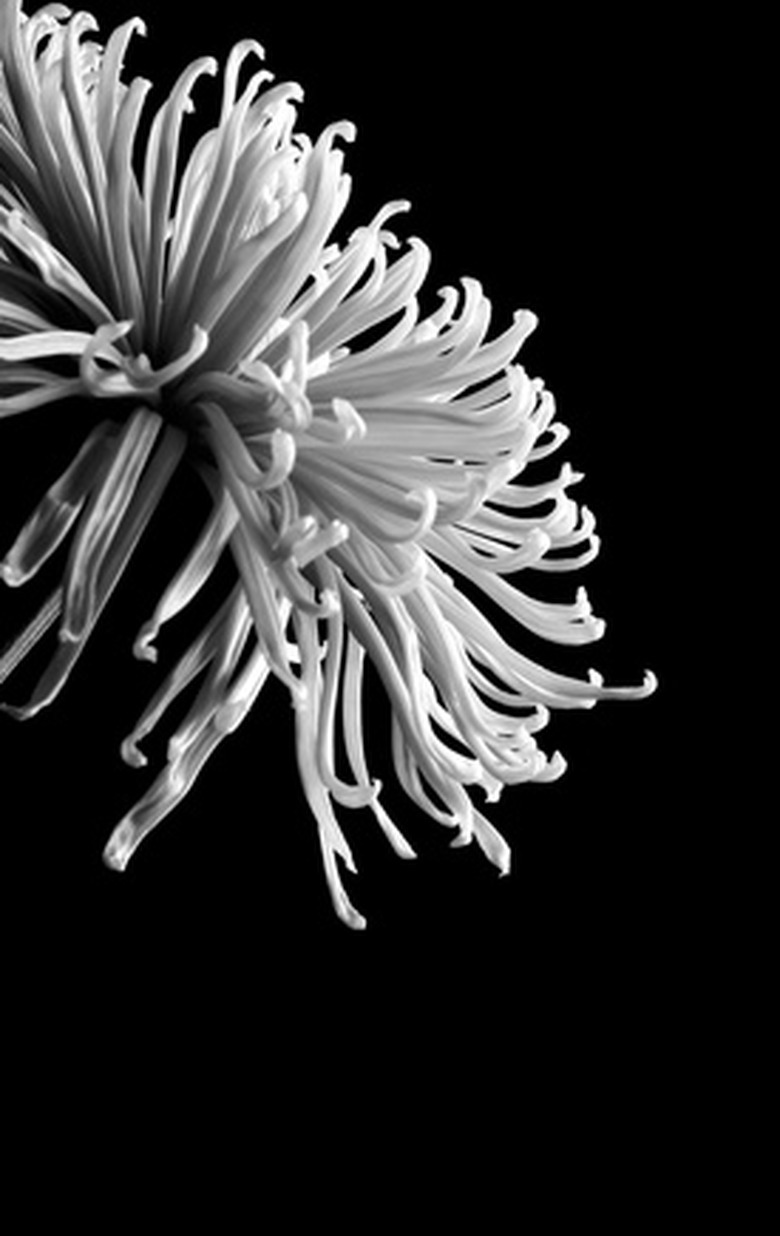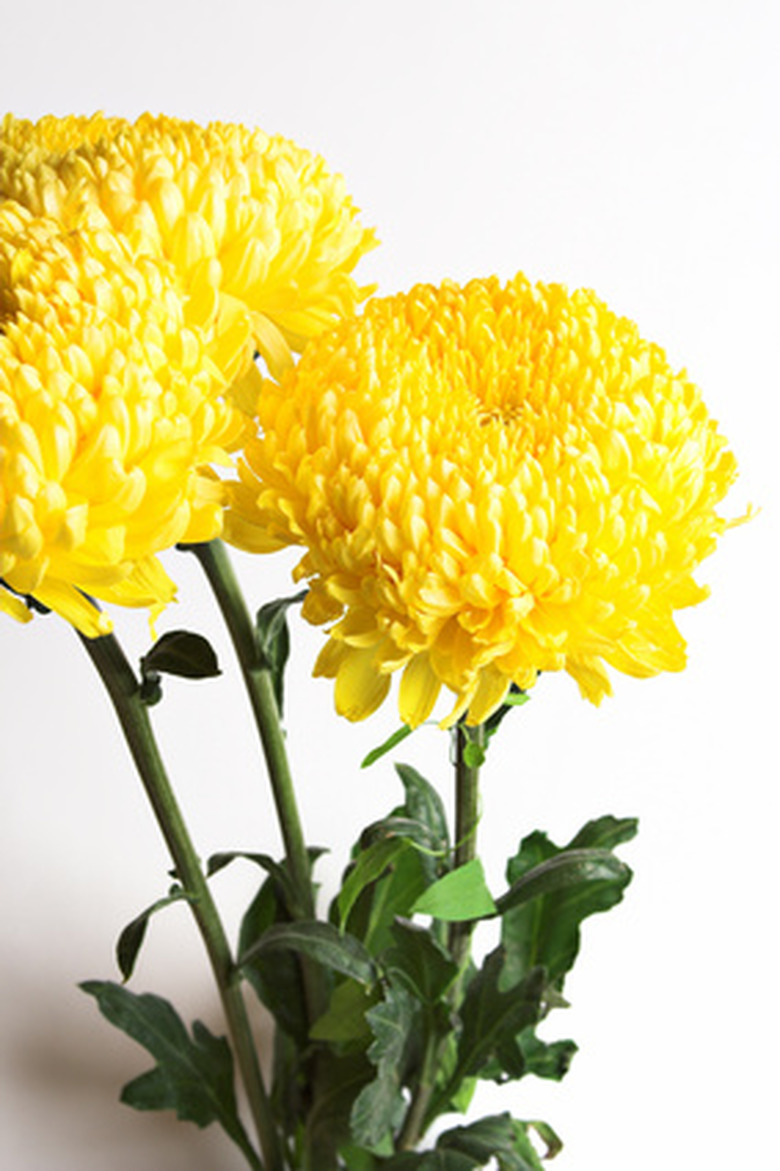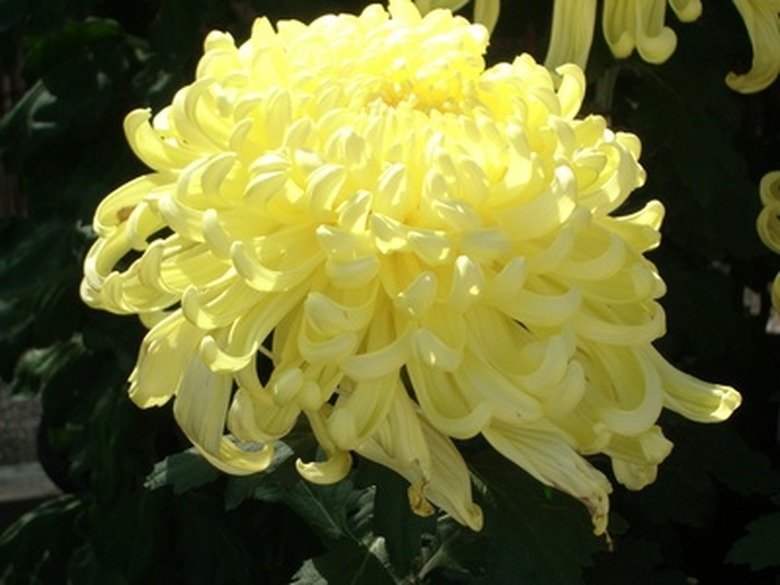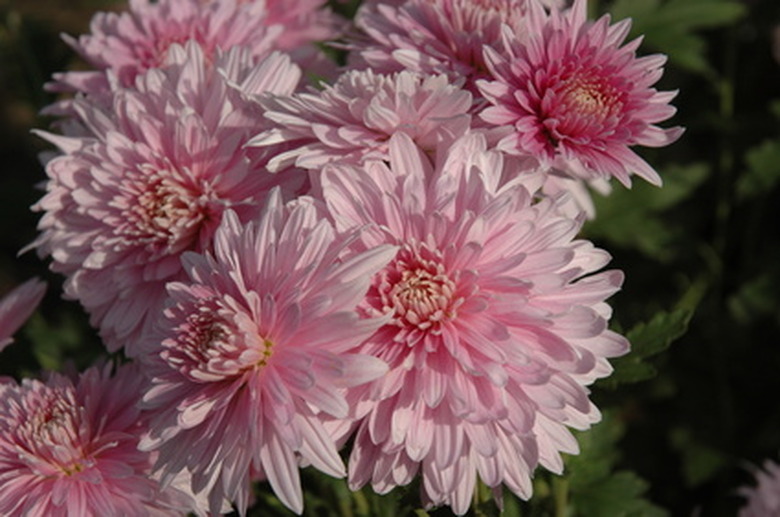The Types Of Chrysanthemums
Chrysanthemums, or mums, are a favorite perennial flower that blooms in an array of bronze, orange, yellow, white and purple hues during the autumn. When almost everything else has died back they bring forth a burst of color to the garden. They originated in China, where they were used for many delectable culinary teas and other recipes. There are more than 100 cultivars classified by 12 flower forms.
Single Blooms
Single blooms look similar to daisies with the central disc and petals equally spaced all around. Some single-boom mums grow to about 2-to-3 feet in height in a bushy manner, while others are smaller, less than a foot tall. Some single-bloom plants grow clusters of flowers, and there is also the single-flower-on-a-stem variety. Icy Isle really looks like a daisy with its yellow center and white petals. Fire Island is another type of single mum that has a yellow center with red petals stripped with yellow.
- Chrysanthemums, or mums, are a favorite perennial flower that blooms in an array of bronze, orange, yellow, white and purple hues during the autumn.
Quilled Blooms
The quilled blooms also look somewhat like daisies, but the petals are narrower, shaped like a quill, and some of them cup up at the end and look like a spoon. Lola is a frequently planted type that grows to be a large plant with beautiful lavender blooms. Kings Delight is a large flower that is a perfect pink.
Anemone
The anemone type of mum also has a central disc with petals that radiate from it, but the petals are tubular and tend to create a cushion. Angel is spectacular with a yellow center then small lavender petals creating the cushion and larger outer petals that are dark purple tipped in white.
Spider Blooms
Spider mums look like spider legs. The petals are long and tubular and sometimes go in all different directions. They look delicate and lacy. Evening glow is a beautiful variety that is a rose-to-bronze color. Symphony is lacy and bronze to yellow.
- The quilled blooms also look somewhat like daisies, but the petals are narrower, shaped like a quill, and some of them cup up at the end and look like a spoon.
- The anemone type of mum also has a central disc with petals that radiate from it, but the petals are tubular and tend to create a cushion.
Incurve and Reflex Blooms
Petals of incurve and reflex mums curve either in or out. Incurve varieties bend upward and create a ball, while reflex petals bend down and look like a flattened ball. Irregular incurve mums have large heads, and the petals are different sizes giving a more informal look. An example of this is Goldfield, a golden yellow mum. Regular incurves are more formal and uniform in petal size, and the mum is more ball-like and compact. Moira is a mauve with lavender variety. Intermediate curve mums have a small flower that looks almost fluffy. St. Tropez is a French variety with bright red petals that have bronze tips. Reflex mum petals droop away from the center. A good example is Joyce Fountain, which is red with a bit of pink near the center.
- Petals of incurve and reflex mums curve either in or out.
- Irregular incurve mums have large heads, and the petals are different sizes giving a more informal look.
Pompons
These are not called pompoms, as many think they are. Pompon mums have a globe-shaped head with short petals that hide the disc. The smaller varieties are often called button mums. Moonbeam has large, solid white blooms, and the plant may grow 2-to-3 feet high. Yoko Ono has very small flowers that are extremely green in color.
Decorative Blooms
The decorative type of chrysanthemum varies in size. The petals cover the disc and some have a flattened cushion without petals that incurve and are longer than the ones on the inside. These are the kind normally seen in flower shows. Lexy is a smaller mum that is bronze with a dark center. Honeyglow is an amber color with medium-size blooms.
- These are not called pompoms, as many think they are.
- Pompon mums have a globe-shaped head with short petals that hide the disc.
